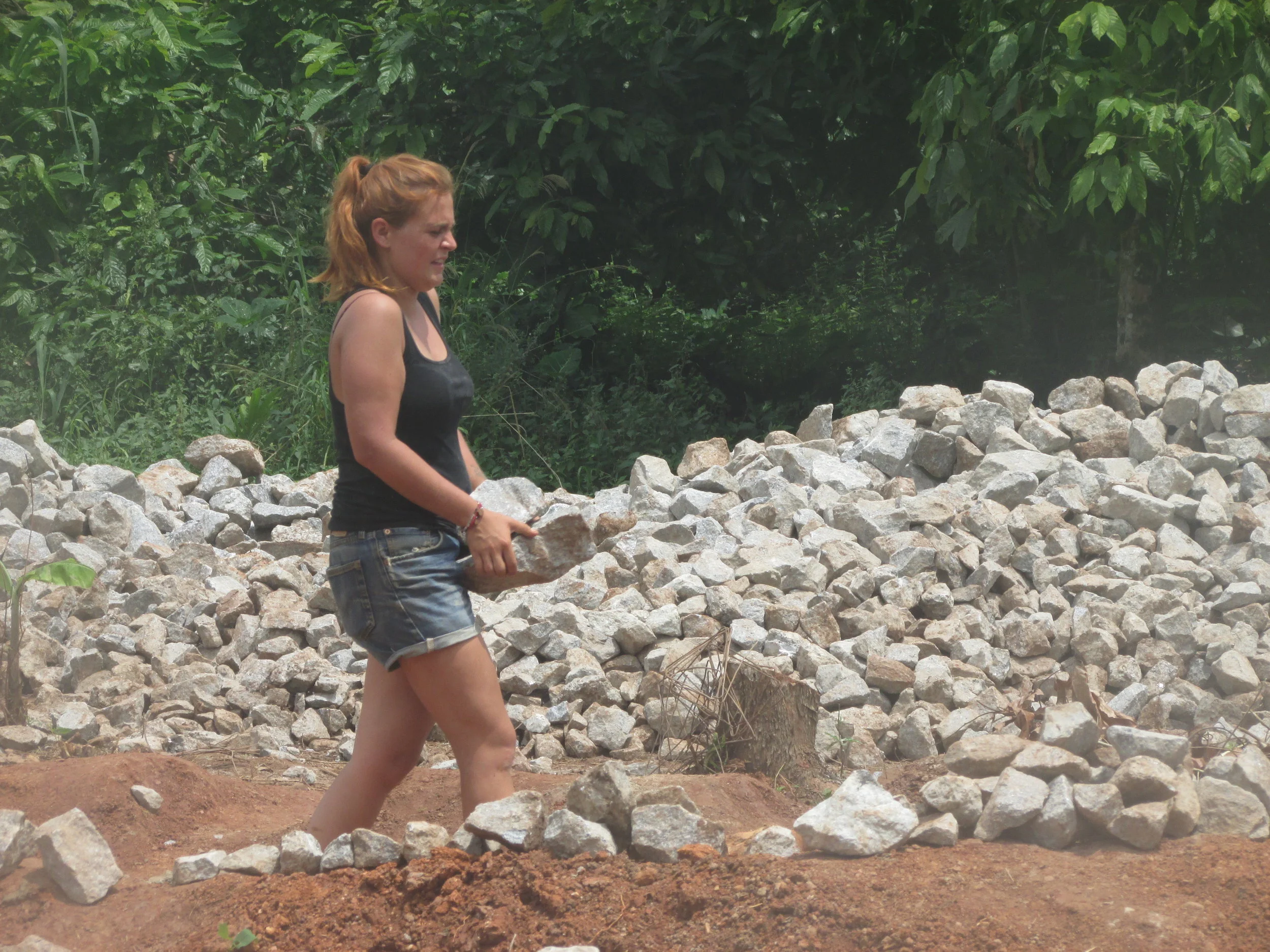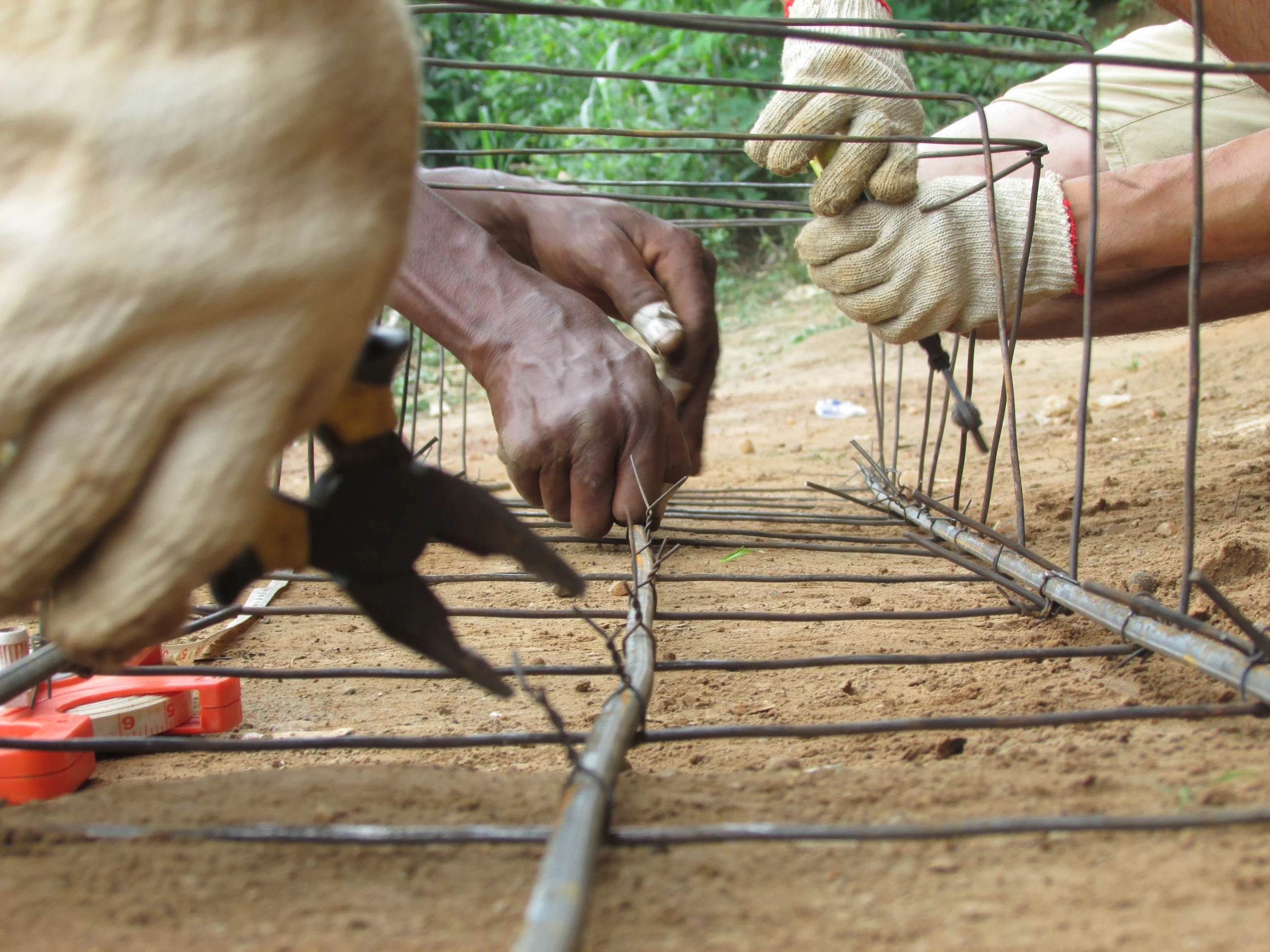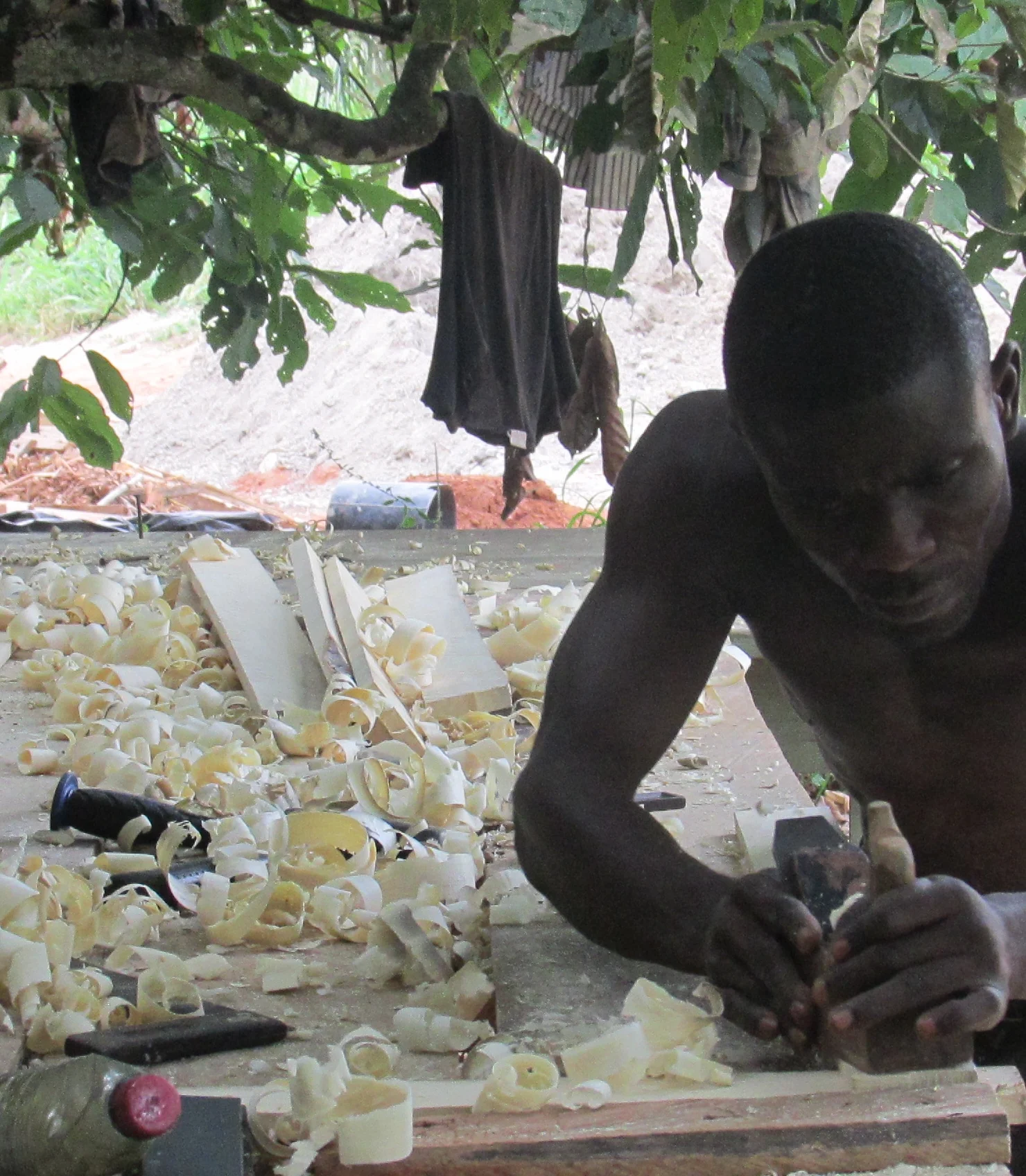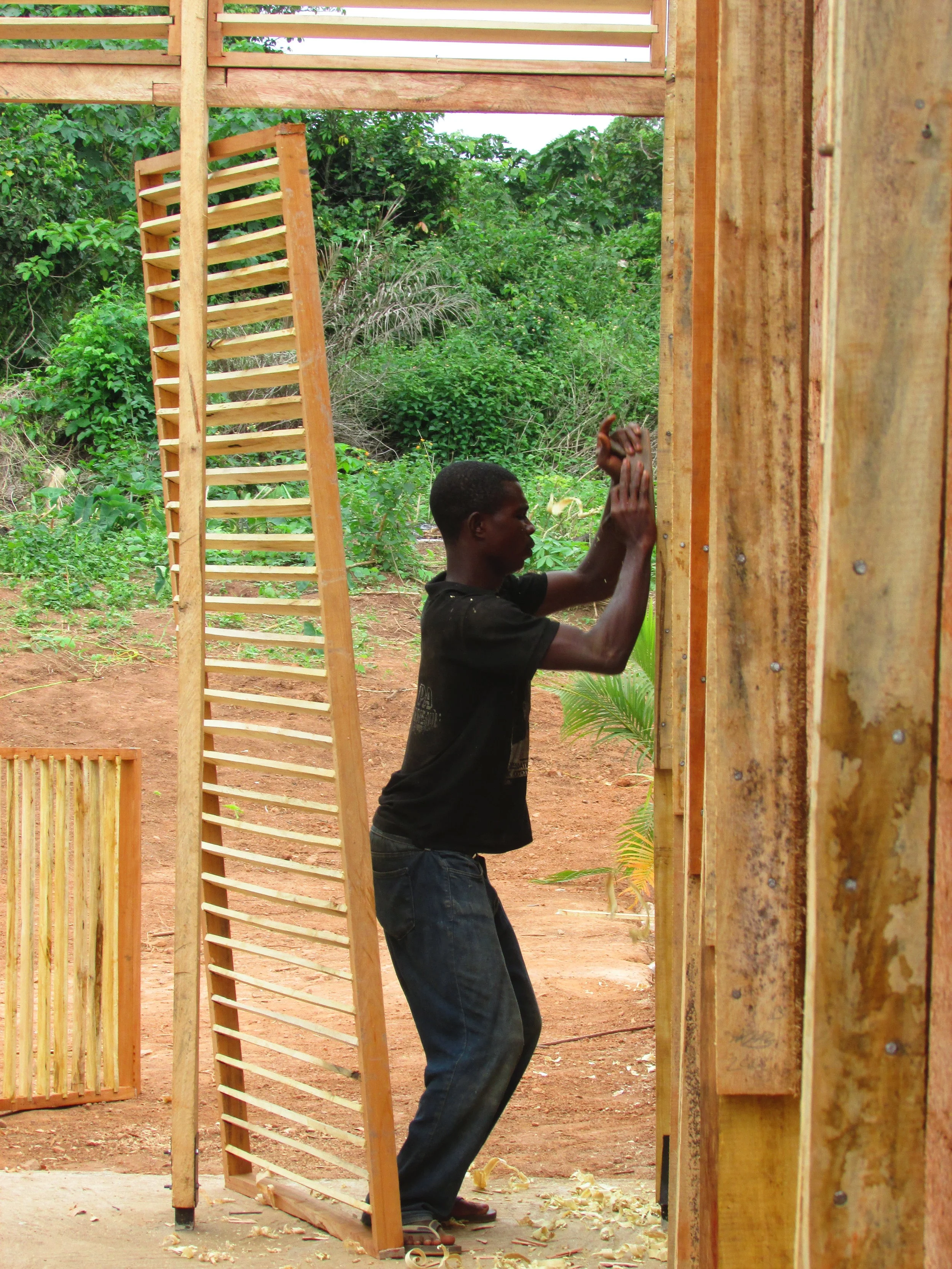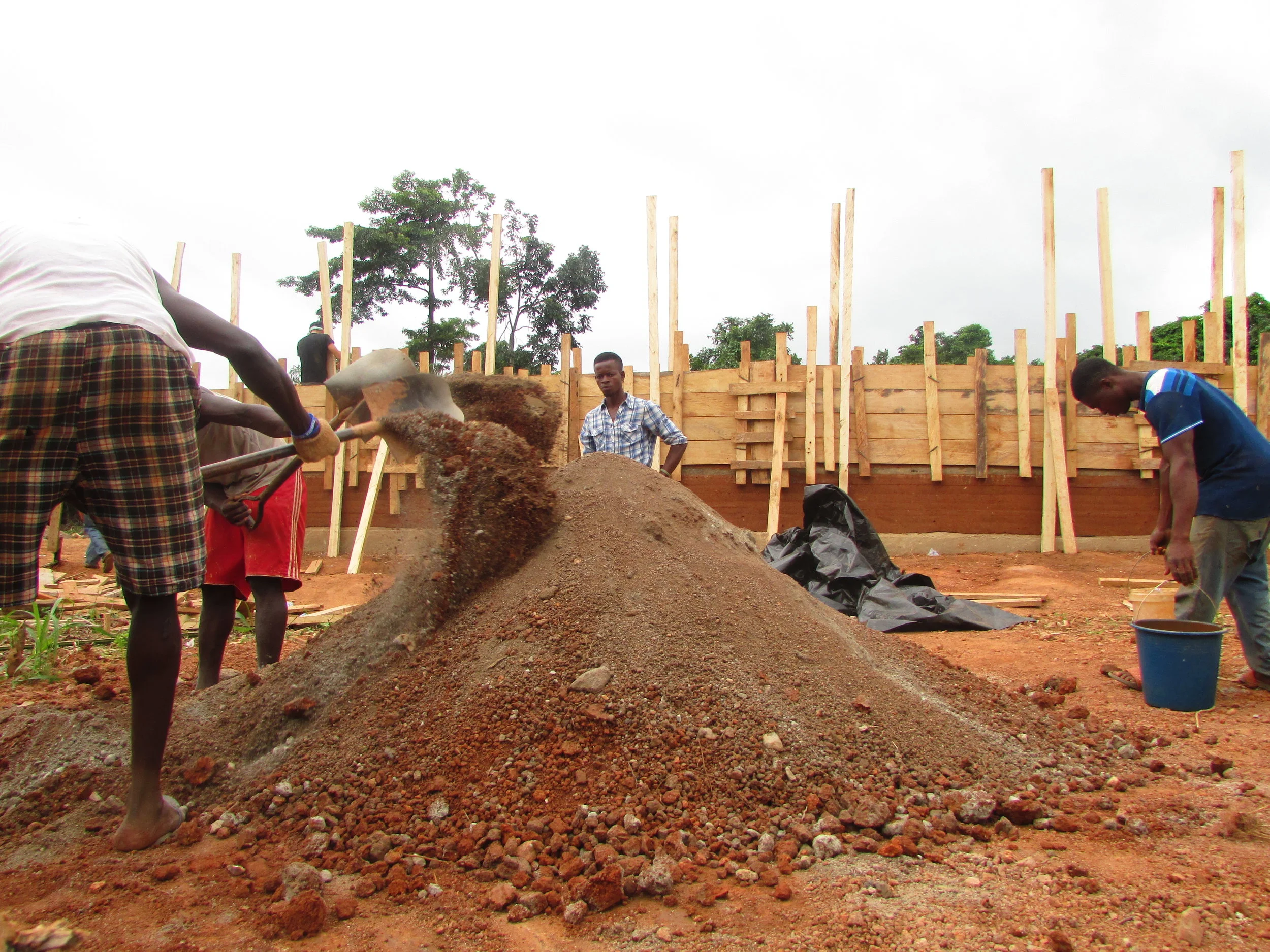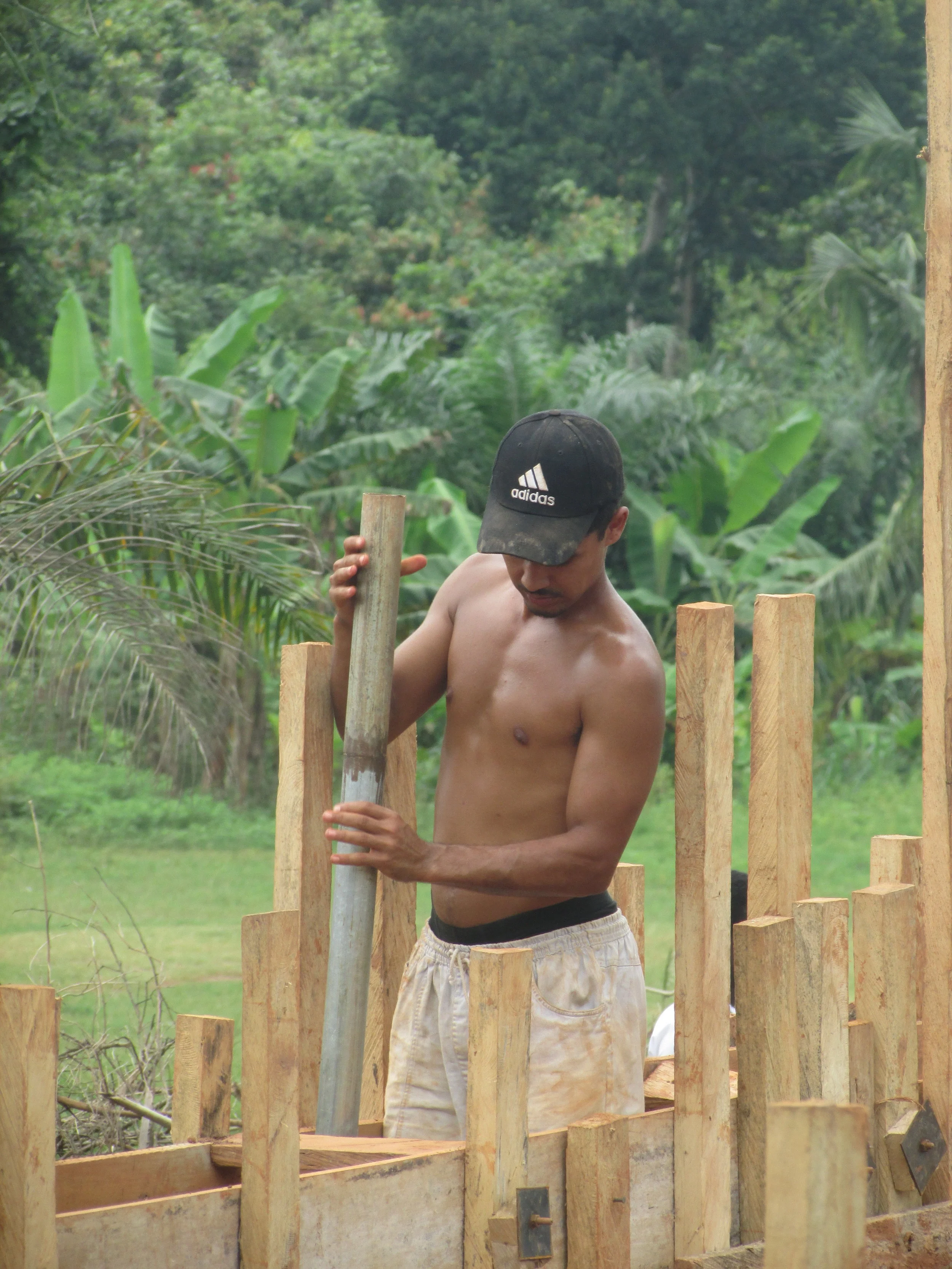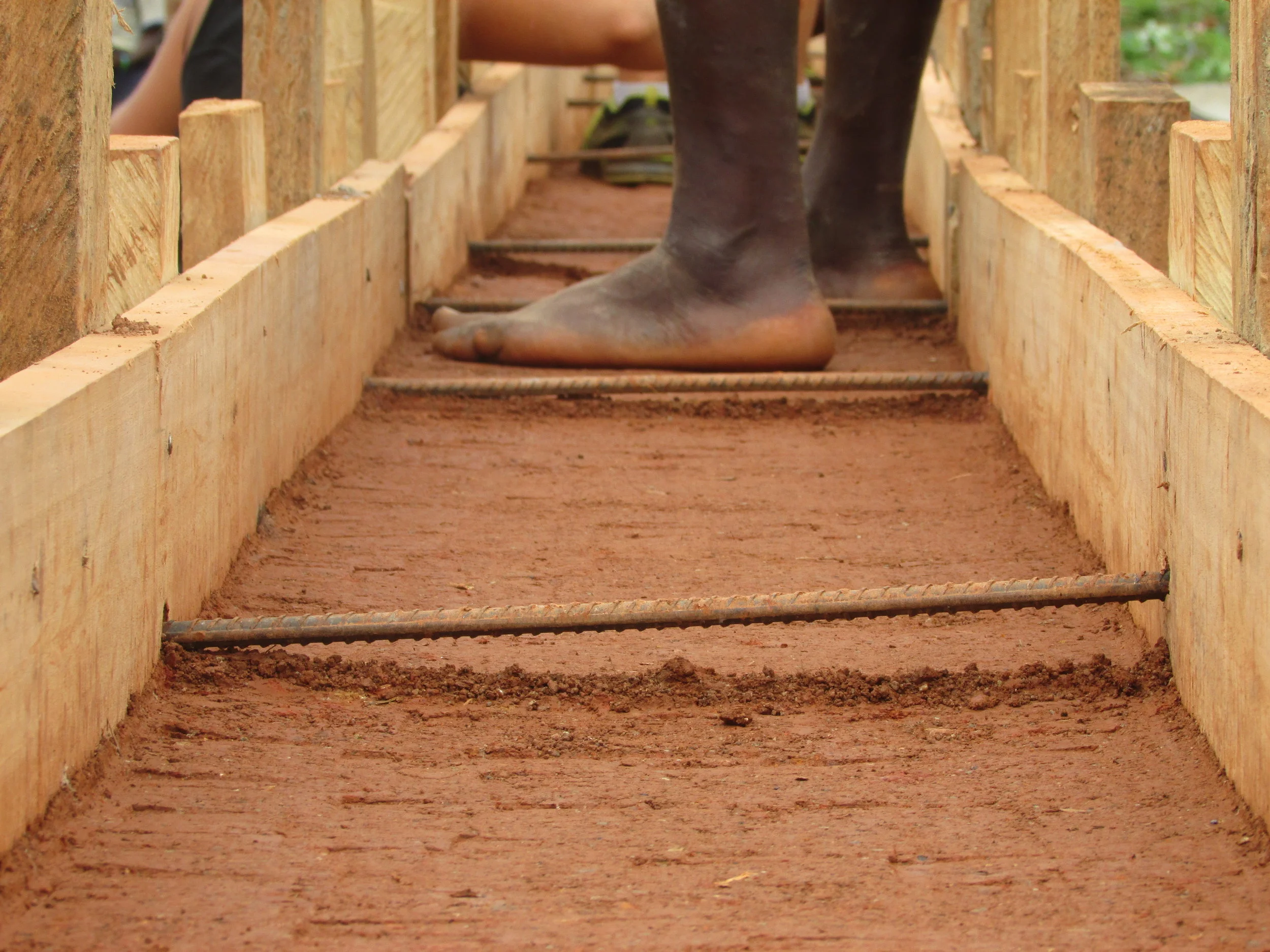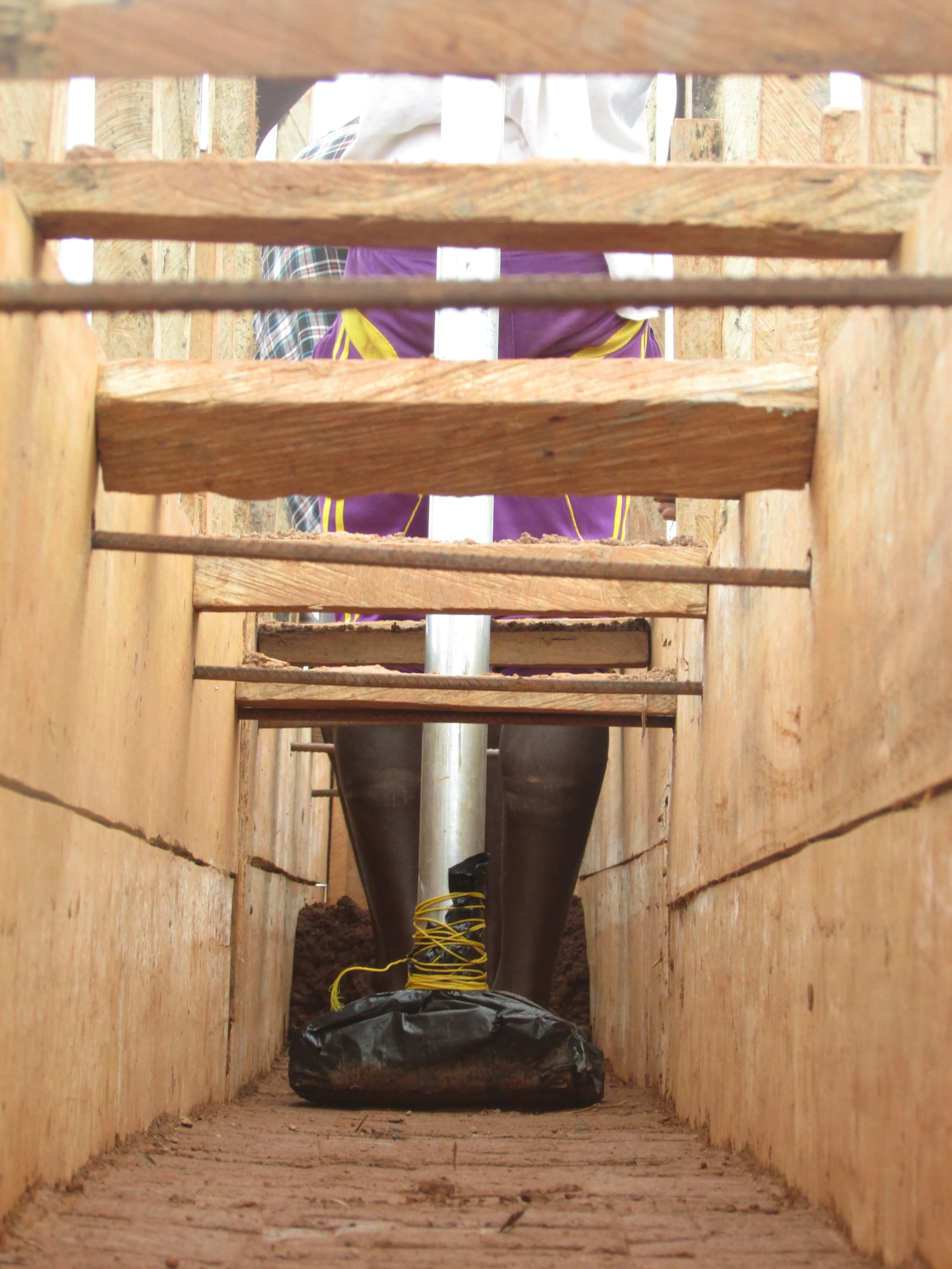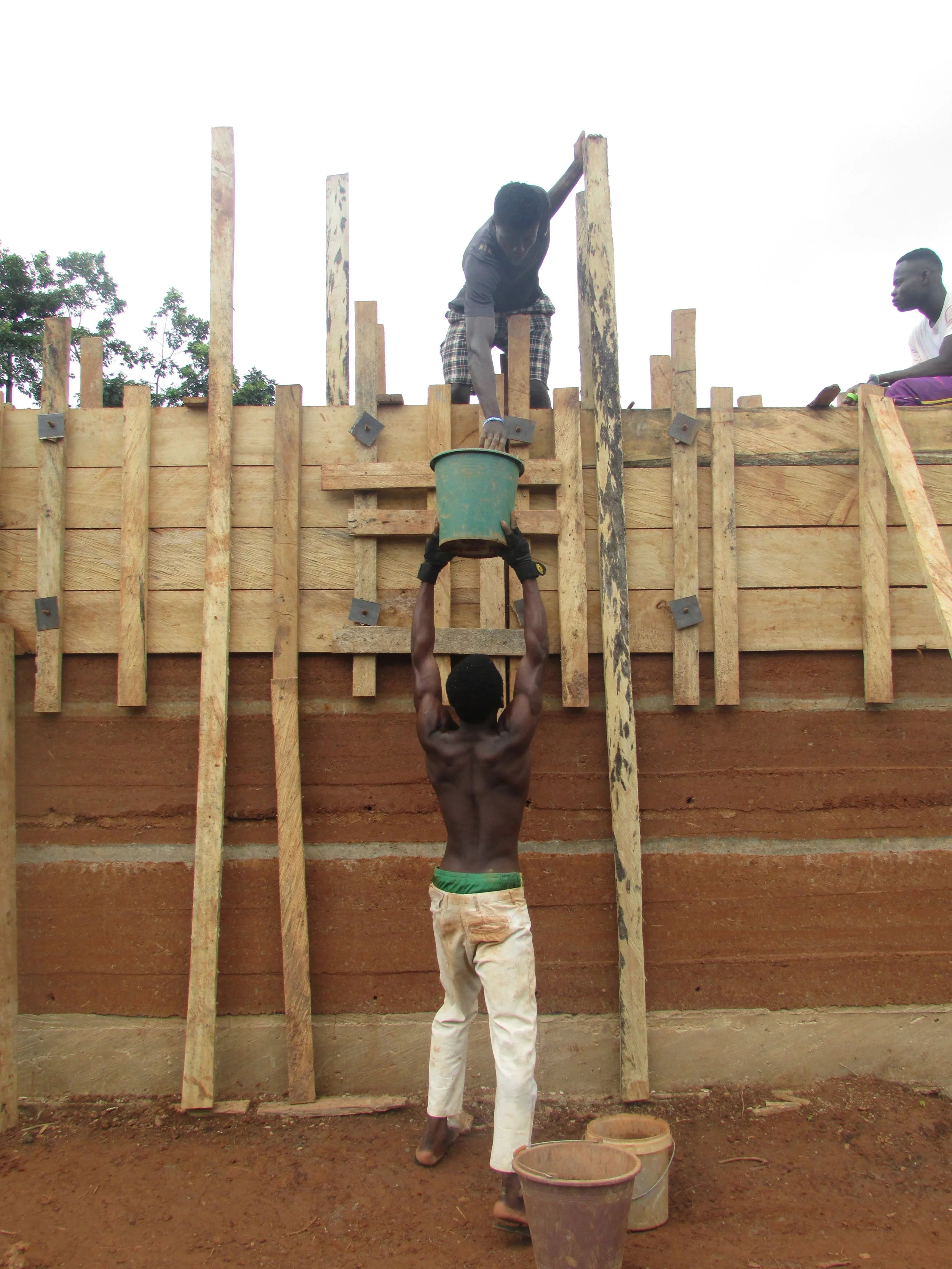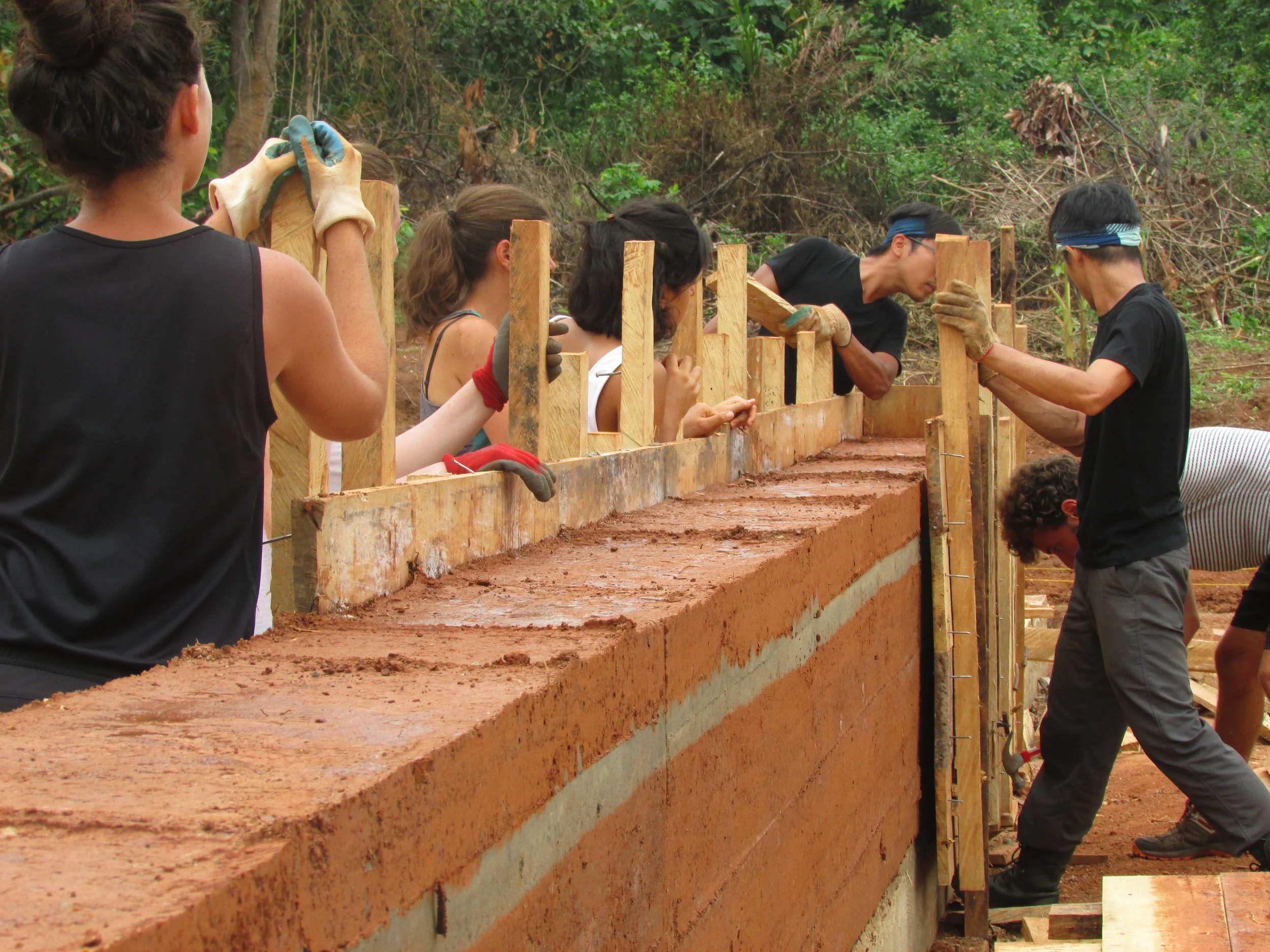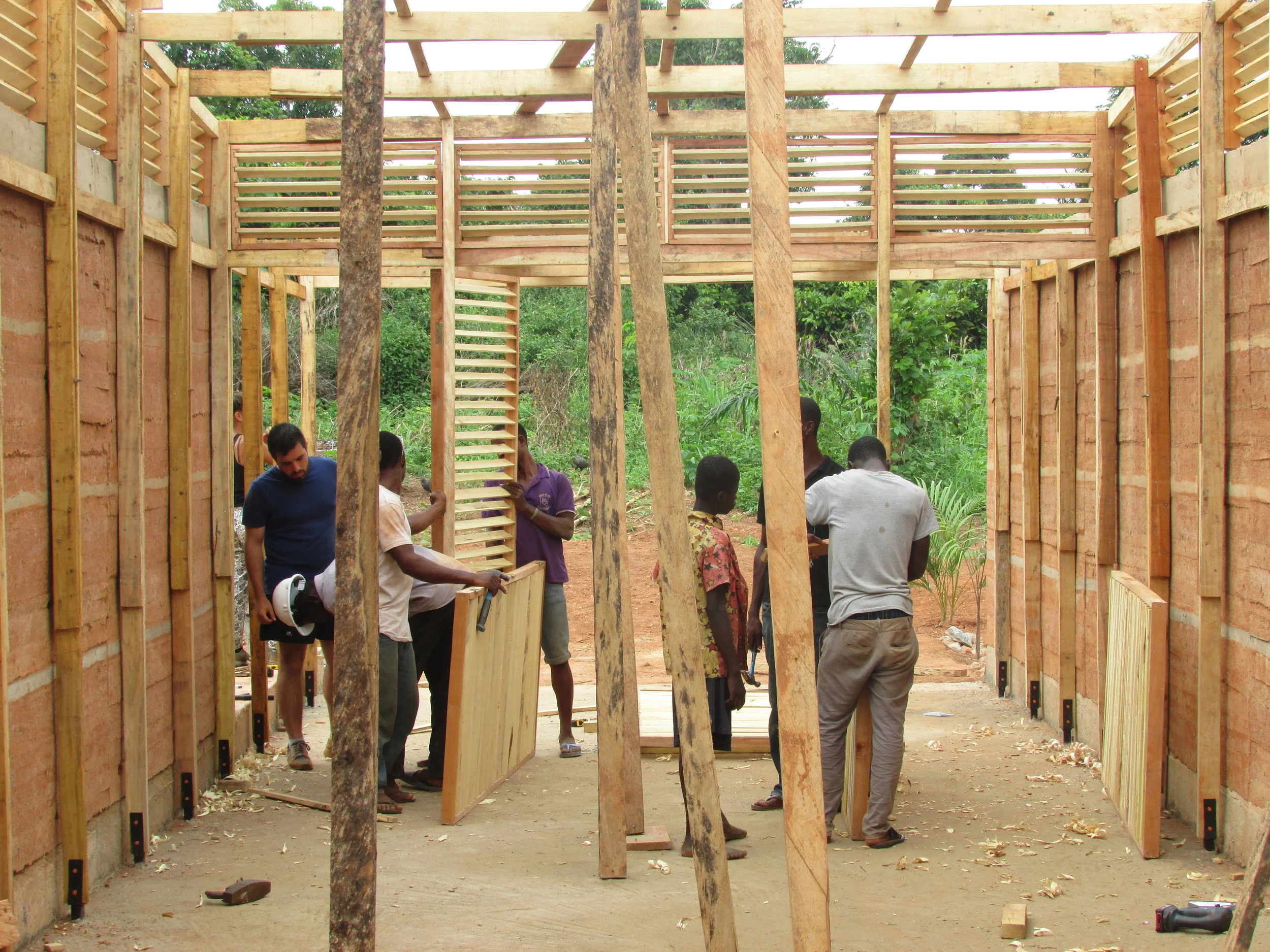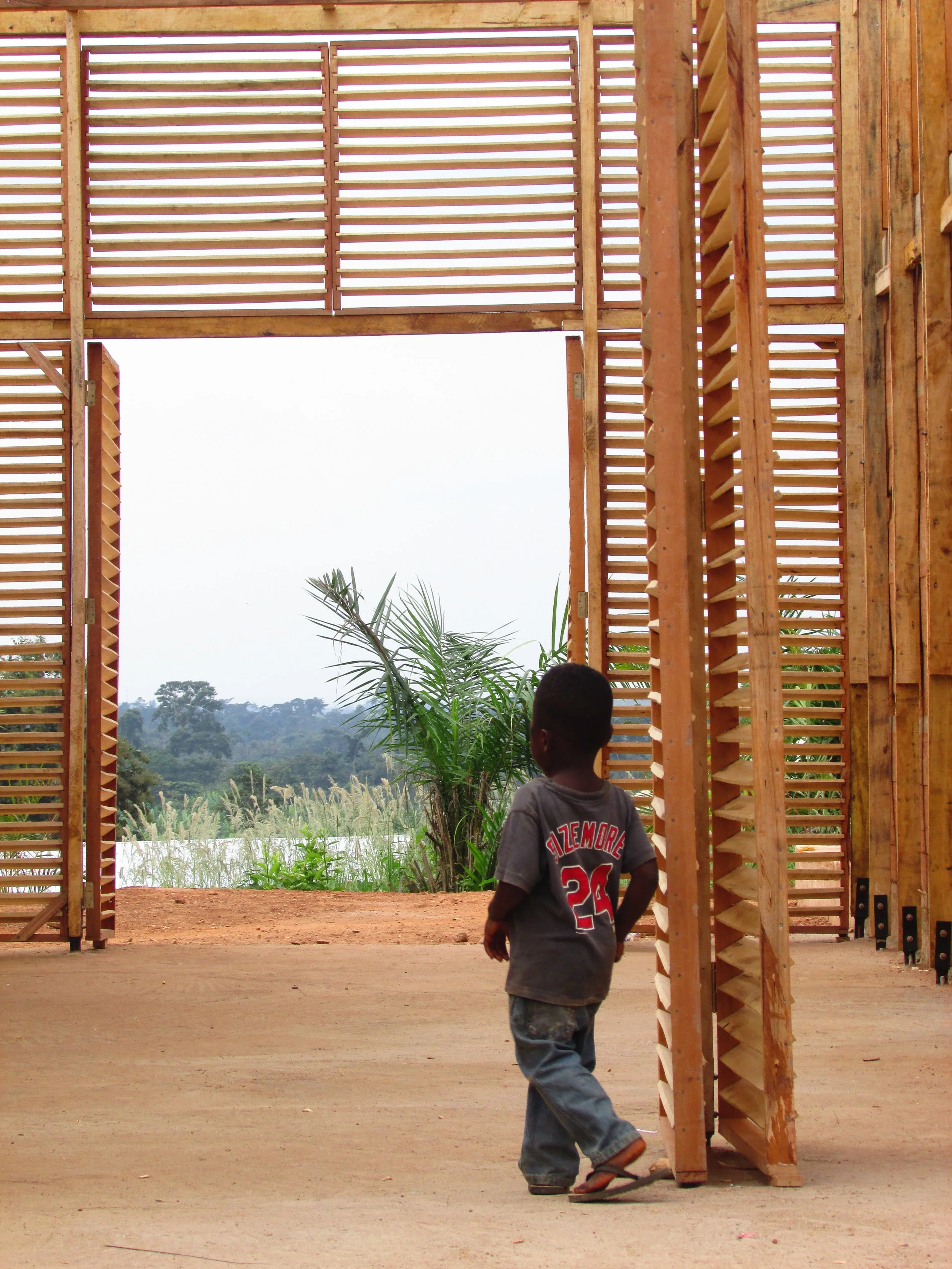INSIDEOUT GHANA
. .
InsideOut is a school prototype built in Yaboahkroam, a rural village in Ghana where the wind had destroyed the only school of the area.
The project was constructed in 60 days with just 12 000 euro, together with the local population and volunteers from over 20 different countries.
The result is a work that blurs the boundary between inside and outside, offering an alternative to standard introverted classrooms and proposing an affordable and easily replicable design that values the local know-how and pushes its limits.
Since no electricity was available it was built by hand, crafting materials available on site (earth, wood and vegetation), moving by hand 58 000 kg of soil and planing 3km of wood with 2 hand planers. The lack of resources and the site limitations become the opportunity to propose a sustainable design that merges architecture and landscape: the staggered walls of the classrooms are built by compacting the local earth, a light wood structure lifts the roof up, allowing zenithal light into the building, and generates a natural ventilation of the spaces, while the vegetation of the garden becomes the continuation of the porches, increasing the shaded spaces to study outdoor.
CONCEPT DRAWINGS
We carried rocks for the foundation.
...A LOT of rocks!...
Rock and Mortar foundation wall.
We made our own rebar by hand for the foundation.
We dug a lot of holes...
Planed a lot of wood...
And removed a lot of trees.
The walls of the classrooms earth built by compacting the local earth. Lightwood structure lifts the roof up, allows light to stream into the building, and generates a natural ventilation of the spaces. The surrounding foliage extends the porches, increasing the shaded spaces to study outdoor.
Bucket by Bucket of earth the walls got done.
Mixing earth with cement, water and sand to make the material for the walls.
Ramming the earth for the walls.
Over, and over, and over again!
Celebration after the walls were finally done after 3 weeks of constantly moving wheel barrels of earth and ramming!
And Yes, it was exhausting, so sometimes we got tired and needed to take a little bit of a break.
The result is a work that blurs the boundary between inside and outside, offering an alternative to standard
introverted classrooms and proposing an affordable and easily replicable design.
With time running thin the wood roof structure sprouted up
and the louvers and doors got attached.
And now we are happy to be able to say...
School is in Session!
MEDASI PA! Yeboahkrom
The whole project was constructed in a two month period with not much more than 10 000 euro. Together with the local population, volunteers from 20 different countries collaborated to construct the project.
Since no electricity was available it was built by hand. Materials available on site (earth, wood and vegetation) were utilized to build. Mainly earth and wood was used resulting in moving by hand 58 000 kg of soil and planing 3km of wood with 2 hand planers.











